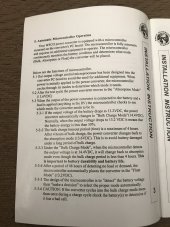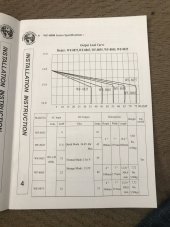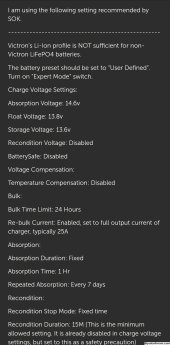Factsmanmp
New Member
Ok, updating my 2005 class c motor home with solar and lithium. Doing it in phases. Started with (2) Coleman 100 wt panels and a Renogy 40 A charge controller. Now I want to swap my (2) 6 volt Trojan with a SOK 206 ah heated battery as it will fit in the compartment under the step. Can I wait to add the Renogy DC to DC charger and change the existing WFCO AD power Converter?






